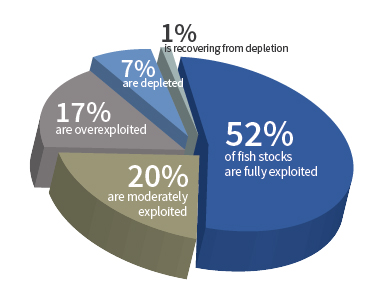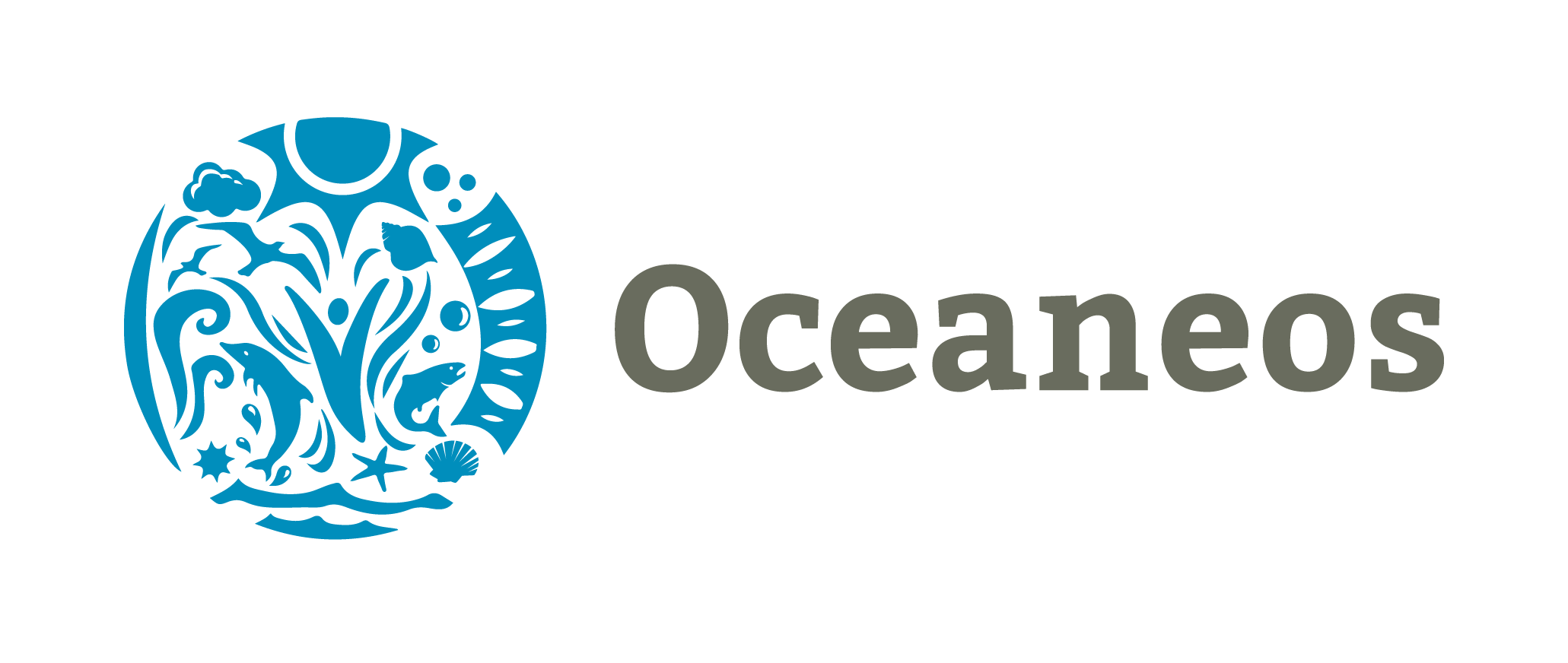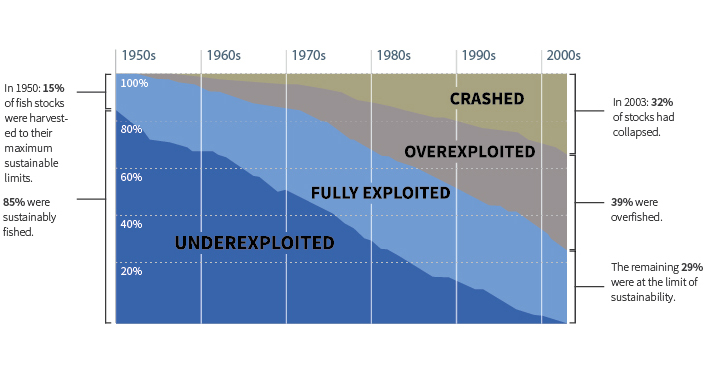Overfishing and its Effects on the Oceans
Overfishing can be defined as “the taking of wildlife from the sea at rates too high for fished species to replace themselves”. The act of catching too many fish leads to an overall degradation of the marine ecosystem, which is not sustainable.
The first recorded incident of overfishing was reported in the early 1800s when humans decimated the whale population in their efforts to harvest oil from whale blubber. Today there are policies and laws in place to protect the whale population in some areas; however, the long- term sustainability of the global whale population remains uncertain.
Atlantic Cod had been harvested to the brink of extinction by the mid-1990s, which led to the collapse of the Atlantic Cod fishery industry and communities in Newfoundland. The effects were far reaching and resulted in the loss of 40,000 jobs and an ecosystem in a complete state of decay. Today, fifteen years later, fishermen are still waiting for the cod to return and communities have yet to fully recover.
Today’s overfishing stems from mid-20th century policies by international governments to increase the availability and affordability of protein-rich foods by allowing an increase in fishing capacity. Policies, loans, and subsidies aimed at providing more marine life for food as well as at protecting the jobs of fishermen led to a rapid rise in industrial-scale fishing operations. Large commercial fleets became the norm on the ocean. With dwindling regulations, or no specific regulations at all, these huge fleets took to the world’s oceans – all the while developing increasingly sophisticated methods and technologies for finding, extracting, and processing marine life.
Further innovations in fisheries resulted in fishing methods that have had a large impact on the basic functioning of marine ecosystems. Unselective fishing practices damage the viability of all marine species. Methods such as bottom trawling destroy the environment of all marine life wherever it is practiced.
Long-term Effects
The figures are very telling. A scientific report conducted by NOAA stated that industrial fishing has reduced the number of ocean fish to just 10 percent of their pre-industrial population. The FAO scientists recently published a two year report on the state of the world’s fisheries and aquaculture. The report is conservative, but highlights the key issues and trends:

Almost 80% of the world’s fisheries are either fully exploited or over exploited, depleted, or in a state of collapse – and 90% of worldwide stocks of large predatory fish are already gone. Species such as Orange Roughy, Chilean Sea Bass, and Bluefin Tuna have collapsed. We are losing species as well as entire ecosystems. As a result, the overall ecology of our oceans is at risk of collapse – and we, as a species, are at risk of losing a valuable food source, which many depend on for social, economic or dietary reasons. Today’s scientists believe that at the current rate, by 2050 all the world’s fisheries will have collapsed [1].



